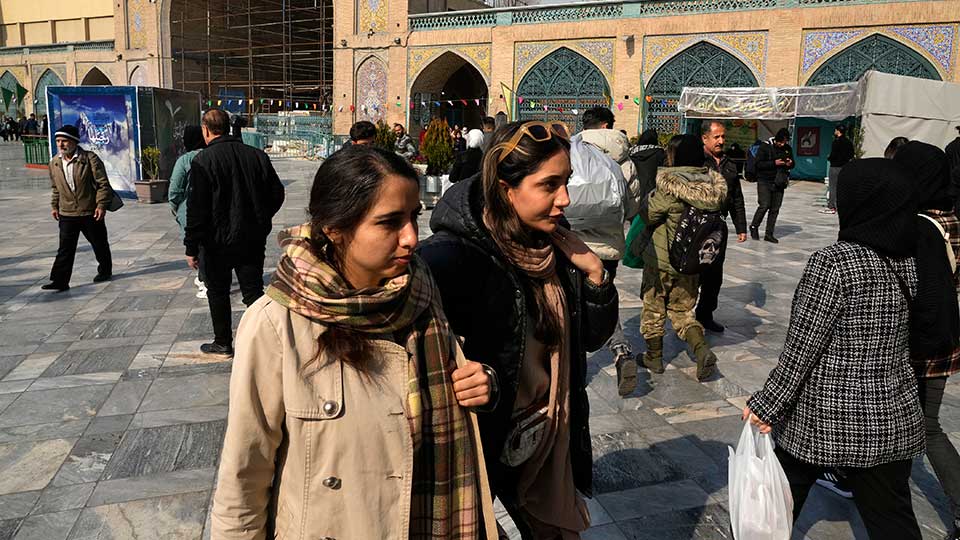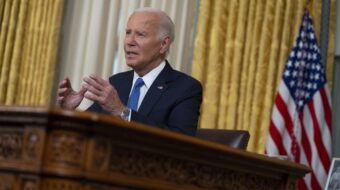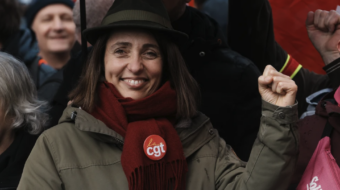
Recent parliamentary elections in Iran have rocked the ruling theocratic regime due to the obvious level of disaffection among the general population reflected in the all-time low turnout. Even before the elections themselves, the government had gerrymandered the process through the rigorous vetting of candidates to make sure the outcome was safe for the regime.
According to a report by the Ministry of Interior of the Islamic Republic of Iran, more than 11,000 people (52% of the registered applicants) were approved by the vetting process.
About 38 percent of all applicants’ eligibility was not approved, and less than 10% of applicants were disqualified. Also, 26 members of the current parliament, who had not been able to show full obedience to the “Supreme Leader” during their time as MPs, were disqualified.
The approval results of the candidates for the Assembly of Experts show that in most cities only a single candidate was approved to take part in the elections. The extent of disqualification of candidates was such that even former President Hassan Rouhani was moved to protest.
In a letter to the Guardian Council, Rouhani wrote, “Those who disqualified me with political motives and also disqualified thousands of candidates of the Islamic parliament elections with mainly political reasons, and deprived people of their right to participate in the elections, are not the owner of the revolution nor the country.
“Neither do they have the competence to determine where the interests of the country lie and disqualify the loyal and compassionate servants of the country.”
Of course, Rouhani conveniently forgets that all those responsible for vetting the candidates have been installed by the Supreme Leader, and when it was deemed necessary to remove Rouhani’s rivals from the election campaigns in the past, they executed their orders so that he could take the presidential seat. However, the fact that such a loyal servant of the regime saw fit to raise objections on this occasion is significant.
Other key personalities, such as Mostafa Tajzadeh, a former deputy minister of interior affairs imprisoned in Evin prison for criticizing the leadership and holding them responsible for political, social, and economic crises in the country, confirmed that he would not vote in the election.
“I will not vote to endorse corruption,” said Tajzadeh in a letter he wrote from behind bars. Tajzadeh had previously applied to run for president, but his candidacy was rejected. He was jailed in October 2022 and sentenced to five years on charges of “conspiring against security and spreading lies and propaganda against the regime.”
Tajzadeh criticized current Supreme Leader Ali Khamenei for ignoring Iran’s dire realities and the people’s protests, urging Iranians to boycott the elections. He stressed Iran’s need for comprehensive development, accusing Khamenei of hindering reforms while lacking the wisdom to lead effectively.
“The majority of Iranians have decided to ignore the Supreme Leader and his propaganda machine, refusing to participate in the elections as a protest against the dire situation in the country,” wrote Tajzadeh. He also condemned the parliament’s ineffectiveness, citing its diminished powers and exclusion of independent voices.
The elections were regarded as invalid by all progressive forces and pro-reform forces generally. Even certain groups of the fundamentalist forces were not happy to support them.
Significant calls by trade unions and pensioners’ groups, civic society advocates, and supporters of human rights reform were routinely ignored by the regime.
While the regime in Iran did its utmost to urge voters to go to the polls, surveys showing that most voters did not intend to take part were proven correct. A recent poll conducted by Iran’s state television found that more than half of respondents were indifferent to the elections.
The elections were the first since Iran was rocked by nationwide protests over the death of Iranian Kurd Mahsa Amini, 22, after her arrest for allegedly violating the strict dress code for women.
The Women, Life, Freedom protests, which swept the country following the state murder of Amini, have undoubtedly been a key factor in undermining what little legitimacy the regime may have possessed, especially in the eyes of women voters.
Turnout was low due to voter apathy and the desire to send a message to Iran’s theocracy. Among prominent Iranians pushing for a boycott were imprisoned Nobel Peace Prize laureate Narges Mohammadi.
Official figures put the election turnout at 41% but this is widely regarded as an exaggeration by independent observers. However, even this official figure makes the turnout the lowest since the 1979 revolution.
In Tehran province, voter turnout was about 24%, another record low, underlining declining public interest in legitimizing the Iranian state. The number of invalid or blank ballots is estimated to have been as high as 400,000 in Tehran alone, showing the extent of deliberate protest.
The reality for many in Iran is that economic hardship is an overriding factor, as the Islamic Republic suffers under punishing international sanctions and rapid inflation.
At Tehran’s storied Grand Bazaar, many shoppers simply wander the warren of aisles without buying anything, as prices have skyrocketed in recent years. In an oil-rich country of over 85 million people, annual inflation is close to 50%, consumer prices remain high, and Iranian currency is in virtual freefall.
Iran has suffered under crippling U.S. sanctions since Washington’s unilateral withdrawal in 2018 from a landmark deal that had promised sanctions relief in return for curbs on Iran’s nuclear program. The sanctions have sharply reduced oil revenues and further restricted trade, helping to harden the decades-old enmity with the U.S. and Israel.
The regime’s manipulation of the election process, and the inability of any candidates from opposition or reform groups in Iran to stand, means that conservative politicians will dominate Iran’s parliament, maintaining their hold on the Islamic Consultative Assembly.
With presidential elections scheduled for 2025 in Iran, the regime will be concerned by the level of disaffection and dissent shown in the parliamentary election results. Previous presidential elections have been carefully manipulated to ensure the safest outcome for the regime and have resulted in widespread protests as a consequence.
Given the growing scale of protest activity in Iran since September 2022, with the death of Mahsa Amini, there is every likelihood that the presidential contest next year will spark further dissent.
The traditional response of the regime has been to crack down hard on such displays of opposition. Whether it will be able to sustain such tactics in 2025, as the Iranian people continue to question the legitimacy of the regime, remains to be seen.












Comments